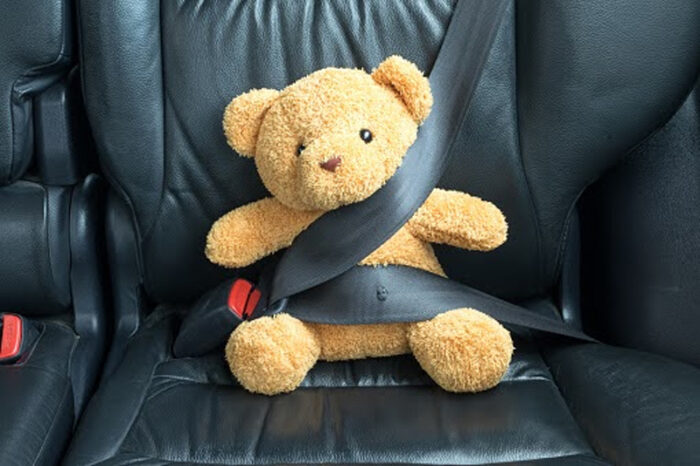
Safety Topics
Learn more about our safety information by clicking a topic below.

Bike Safety
More than any other sport, biking-related injuries are the most seen in emergency rooms for children ages 5 to 14. Wearing a helmet can reduce the risk of severe brain injuries by 88%, but only 45% of children ages 14 and under wear a helmet. Learn more about bike safety and how to determine if your helmet fits properly.

Button Battery Safety
A swallowed button battery (lithium coin battery) is a medical emergency. Every year in the United States, nearly 3,500 calls are made to Poison Control regarding swallowed button batteries. Learn how to keep children away from batteries and out of the emergency room.

Child Passenger Safety
With the daily demands of parenthood, it may feel impossible to keep up with the new car seat technologies, recalls and ever-changing child passenger safety laws. We’ve gathered safety tips and frequently asked questions to help you solve your car seat concerns.

Dog Bite Safety
Dog bites pose a serious health risk. Every year, nearly 4.5 million people in the United States are bitten by dogs. Of those who are bitten, 60% are children. Learn simple safety tips to prevent your child from getting bit when they are around or interacting with dogs.

Falls Prevention Safety
Children are at risk for falling, or for having things fall onto them. Climbing on furniture, playing near an unsecured window, falling down stairs or playing on playgrounds can result in injury. Learn what you can do around the home to prevent falls and injuries.

Fire Safety
At least one child dies from a home fire every day. Of all fire-related deaths, 88% are due to home fires which spread rapidly through the home, leaving families little time to escape. Follow our simple safety tips to prevent fires in the home.

Pedestrian Safety
For children ages 5 to 19, unintentional pedestrian injuries are the 5th leading cause of injury related death in the United States. Learn how to teach children to be safe while walking and why teaching them road safety basics as young as possible is beneficial.

Poison Safety
Everyday household items such as cleaning products and personal care products can be harmful to children. In fact, 9 out of 10 poisonings occur at home. Children under 6 years of age comprise a disproportionate percentage of the cases called into the Poison Control Hotline. Learn poison safety tips to keep your children from finding their way into household items that could be dangerous.

Safe Teen Driving
Motor vehicle crashes are the #1 cause of death for teens. Learn the importance of talking with your teens about driving rules, boundaries and expectations in effort to keep them safer when they are behind the wheel.

Water Safety
Drowning – in areas of the home like bathtubs to recreation areas like pools, lakes and the ocean – is a leading cause of injury-related death for children of all ages. Becoming more aware of water safety can help reduce the number of water-related incidents.

Vehicular Heat Stroke Safety
Sometimes babies are so peaceful and quiet in the backseat that we can forget they are even there, and it can be tempting to leave a sleeping baby in the car so we don’t have to wake them up while we quickly run into the store. But leaving a child alone in a car can lead to serious injury or death from heatstroke, even in cooler temperatures.

Sleep Safety
Every year in the United States, there are an estimated 3,500 infant fatalities from sleep-related deaths. By following a few simple sleep safety tips, you can put your mind at ease.

Toy Safety
Overall, toys are safe and fun for children, however becoming more aware of the possible dangers and being active to prevent them can save a child from injury and even death.


